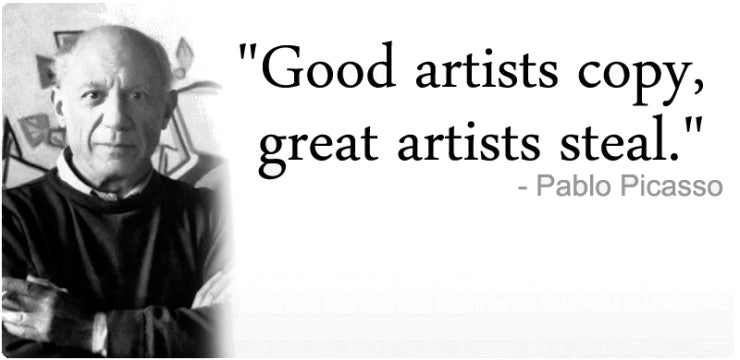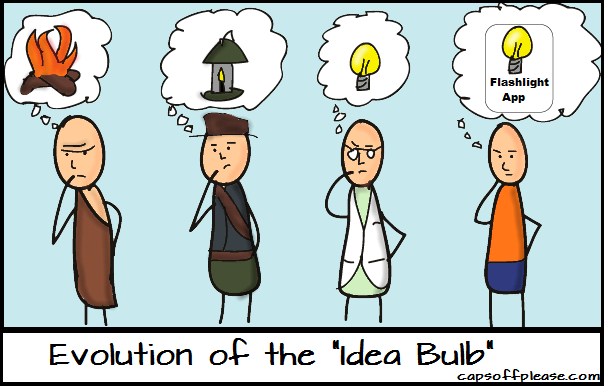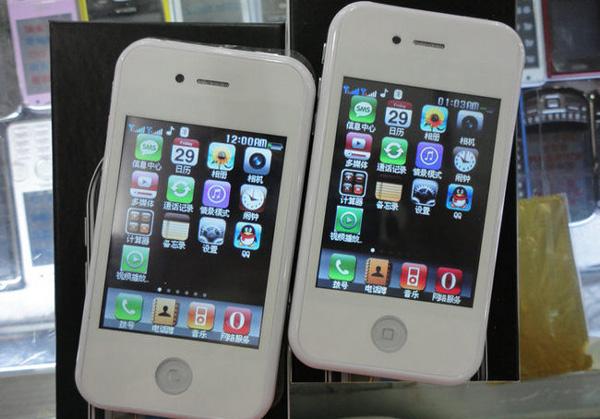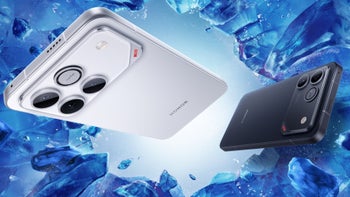The smartphone market is currently in its golden days. The little pocket PCs have permeated in the everyday life of the consumer and everybody either has or wants one. The demand is huge and, thanks to rapid and constant advances in technology, the upgrade cycles average at around 24 months, which means that users are constantly keeping an eye out for the “next big thing”. This makes the market very lucrative and, naturally, a lot of tech companies are trying to put out an interesting smartphone and grab a slice of the pie.
So, there may be quite a lot of manufacturers duking it out, but out of the plethora of devices that are out there, only a few smartphone series are actually well-known and somewhat of an industry staple. Of course, often times their designs and features get mimicked by competing manufacturers, who are trying to grab the attention of potential consumers by creating a device that sort of looks like one of the aforementioned staples.
China-based manufacturers most often get flak for ripping off both hardware and software ideas from well-known companies, but it's not limited to them. Samsung's Galaxy S6 is often pointed out as a main offender in taking design cues from Apple's iPhone 6, and it's pretty hard to deny the similarities when one compares them side by side. However, such accusations often result in fans engaging in the eternal argument-war of “Who copied more than the other”.
In reality, the whole copy shaming should be cooled down a bit, because “idea borrowing” is in the core of human creativeness and is actually good for progress.
It's in the way we create
An Early Hall Braille typewriter employing the piano keyboard concept"
From when we are but babies, we start observing, learning, and copying other people's behavior. This is how we gradually learn the proper ways to move and communicate and generally express ourselves in the world. We are but products of the social influences around us – we just choose how to combine them within our persona.
Sorry for the meta, I am just trying to make a point here. The above statement holds true not only for the way we build our own personality, but for how we create art, how we make technological breakthroughs, and generally – how we invent stuff. Painters and musicians have “artistical influences” – they borrow, meld, and combine ideas from other people. The result is a piece that is sort of new, but not entirely. With a little luck, the new painting / song / sculpture may just turn out to be something that hasn't been done in this particular way before, which would instantly dub its artist as being “creative”.
Notice that in this short arc of a story, our protagonist didn't really come up with something entirely original, rather – they combined other people's artistic ideas in an original way. Don't feel bad for the sources, though, because their own creations were probably conceived in the same manner. It is just how we are – when one comes up with an original creation, the rest of us copy it, repeat it, and combine it with other concepts for a painful amount of times. It is very rare that someone actually invents something entirely new, and history tells us that such people are usually ahead of their time and unlikely to be understood by their peers.
The same happens in technology. The musical instrument called dulcimer was the inspiration for the creation of the harpsichord, the harpsichord was used as a basis for the piano, and the piano was one of the main inspirations behind the first-ever commercially successful typewriter – its inventors combined previous, unsuccessful typewriter attempts with the familiar idea of a piano's keyboard and magic happened.
Get to the point
Enough going off on tangents – let's cut to the chase. As I previously mentioned – “borrowing” of ideas in the smartphone world is a very common thing nowadays. Many people are quick to jump on the “copycat blame” train, which often results in endless flame-wars over who copied who first. A lot believe that imitation is a sign of a lack of innovation in the industry. I dare argue that point.
Leaving cheap-o carbon copies aside, every manufacturer that gets their function and design cues from the “big boys” does it in their own way. Samsung's
Galaxy S6 does resemble an
iPhone 6, true, but it is much more than that – its sides are flattened for an easier grip (compared against the oval sides of the iPhone 6), its back is covered in glass, echoing a trend that Apple abandoned back in 2013, and its display is still larger.
OnePlus 2's home button really, really looks like the one on Samsung's flagship, but it's actually a touch-pad that can be programmed to quick-launch different apps – taking Sammy's “dual press for camera” concept a step further.
Look at it another way – the manufacturers are under a lot of pressure. They need to design something that sort of, kind of, maybe looks like a successful product that the general public favors and desires. Then, said manufacturer needs to put in the extra thought that will actually differentiate its creation, set it apart and place it in its own niche. It is in this process that true innovation can be found, and anyone who pulls it off should be considered creative.
That's how it goes – when someone's good idea goes out into the world, it gets copied, it gets tweaked, expanded upon, and meddled with. It gets its own “life” of sorts, and starts developing when jumping from one inventor's noggin to the other. Just take a look back at how Android and iOS have been borrowing from one another throughout the years. Whatever technology it is, eventually, it reaches a peak – a place from where it can't evolve much further, and it becomes a standard – something that we are so used to that we can't imagine anyone building it in any other way. Said standard is no longer called a stolen concept – it is the result of years of bouncing back and forth between different competitors who, in their constant rivalry, have managed to develop it, push it, and perfect it.
But why not go really crazy and, instead of bouncing the same tweak concepts back and forth, create something totally different that disrupts the market, you ask? Trying to “innovate” way too much may hurt a company much more than it would do it good. The first iPhone, back in 2007, was greeted by mixed reactions – it was often berated for not having a physical keyboard and lacking a stylus, and underestimated by competitors (their mistake). As previously mentioned – we humans can often fail to recognize a good idea, just because it looks alien and outlandish at first sight. Apple, however, had a devout fan following, a strong marketing campaign, and a decisive push that actually got the thing in front of people's eyes and on the back of their minds. If not for these factors – the iPhone could've easily crashed and burned. But how many times in a decade (or two) can humanity actually re-invent a type of tech in a way that it disrupts a certain industry? And, even if a visionary company manages to conceive and build the “next disruptor” – it will definitely need to invest a considerable amount of resources in backing it up and keeping the project floating until people “get it”.
Now, looking at the cut-throat market of today, who would be willing to take such a risk? That's right – nobody. The bottom line is that until the market gets over-saturated, tech advancements slow down, and sales chill out, there will be no need for anybody to make such a “make it or break it” attempt. In fact, everyone is so infatuated with the current type of smartphone, which is still in its evolution state, that I am not even certain if anyone has the imagination to actually come up with something vastly different. For that reason, we are stuck with companies re-making and re-imagining the same successful formula over and over. And, it just so happens that a “successful formula” for a smartphone is determined by a popularity contest... and we all know who's been winning that for a while now.
This absolutely does not mean that carbon copies are OK
Let me just make it clear that companies that try to turn a quick buck by building a carbon-copy product with junkyard parts irk me as much as the next guy. Also, I am no fan of naming scheme copying – the fact that so many phablets that come from Chinese manufacturers are dubbed "Note" just rubs me the wrong way (not even going to mention the MiPad... oh, wait – I did).
Not everybody reads up on tech news, not everybody follows the smartphone market closely, and there are relatively few people out there in the world, who understand the rule that "If it looks too good to be true – it probably isn't" (in the context of seeing a super cheap price-tag on a top-tier smartphone). Users who get duped into buying a counterfeit Galaxy S6 may eventually find out that they have been sold a potato, but the fact remains that, from now on, their brain will be hardwired to doubt Samsung products – because the only “real” experience they've had with one would actually be this pretty “fake” one. Users who buy the “Super-awesome iCommunicator Note” may learn to associate the word “Note” with “paperweight-that-looks-like-a-phone”, which puts Samsung's Note line in danger of losing potential buyers.
My point is that carbon copies, or attempts to ride the fame wave of a phone's name, may actually hurt the originator companies – the one that put the money and effort into developing and perfecting the tech that we all love and use on a day-to-day basis. So, to make it absolutely clear, I may like to play devil's advocate when a certain company “draws inspiration” from another, but outright copying is never OK, and I often suggest against the purchasing of such products – to protect the customer, and to deprive the manufacturer of at least a bit of profit.

















Things that are NOT allowed:
To help keep our community safe and free from spam, we apply temporary limits to newly created accounts: